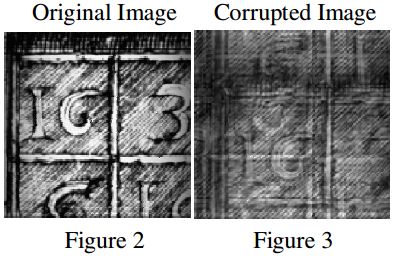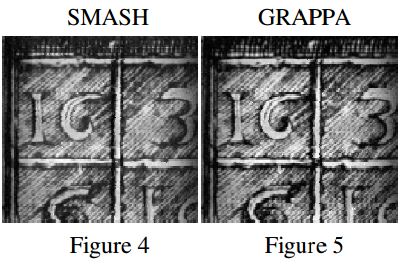MRI Image Analysis
Project Summary
Loud noise, claustrophobia, and the ability to remain still or to hold a breath are all limitations to MRI techniques. It is because of these limitations that it is extremely important to be able to acquire an MRI as quickly as possible. Partial parallel imaging (PPI) has allowed for the possibility of rectify some of these problems. Some limitations that are typically addressed in research include faster signal acquisition and the patient motion suppression during MRI acquisition. The later of which is dealt with in this research.
Not only is it hard for some patients to stay still or hold a breath for a given period of time, but taking images of the cardiovascular region includes many veins and arteries that are continually beating and moving. In order to get rid of motion ‘ghosts’ and artifacts that result from motion during signal acquisition, motion correction algorithms have been created that are able to detect motion corruptions in k-space by using the redundant data left over from the multiple receiver coils of a PPI n-coil array.
One technique to correct motion corruption uses simultaneous acquisition of spatial harmonics (SMASH) to compare a given line in k-space to its neighboring line. Thus, as data is acquired line by line in the read-out direction, inconsistencies that result from motion corruption can be detected by comparing a predicted line to the actual line: a significant difference between the two would suggest some type of motion corruption.
In this research project, a novel technique known as generalized autocalibrating partial parallel acquisitions (GRAPPA) was explored for its adaptability as a motion correction technique and compared the SMASH technique in hopes that it is a more robust method. We found that the obvious but novel method which applied a phase in both kPE and kFE directions using data that had not been Fourier transformed seemed to work much more efficiently than the SMASH method. The SMASH algorithm worked consistently faster, probably due to the fact that the GRAPPA weight generation and motion correction programs take longer to execute in Matlab than the SMASH versions, particularly for smaller tolerance (0.7). However, as the tolerance approaches 0.9, the reconstruction times became nearly identical.
The GRAPPA algorithm consistently produced a crisper image than the SMASH algorithm. Also, as the error tolerance increased, GRAPPA seemed to need fewer error corrections than SMASH, suggesting improved accuracy over SMASH. With artifact reduction being the most important factor, GRAPPA seemed to consistently work more effectively than SMASH. However, there are certain factors that were not taken into account during the simulation. First, in vivo motion corrupted data was not used and thus it is hard to accurately tell which algorithm would be more fitting for real life application. Lastly, the motion that was simulated corresponds only to motion between the acquisition of adjacent lines of k-space, not during the acquisition of a read-out line.
Related Media
Publications
Published
- Roder P, Willig-Onwuachi J. “GRAPPA Navigators: Motion Correction with Parallel Imaging.” Proceedings of The International Society for Magnetic Resonance in Medicine, 1291, (2008).
Acquired Skills
Simulation & Analysis
Custom Matlab Simulation
Image Processing in Real and Fourier Domains
Algorithm Development
Algorithm Comparison
Device Fabrication & Analysis
MRI Coil Creation
BNC Wire Creation
Oscilloscope Analysis
Research Lab
Location
Grinnell College, Physics


